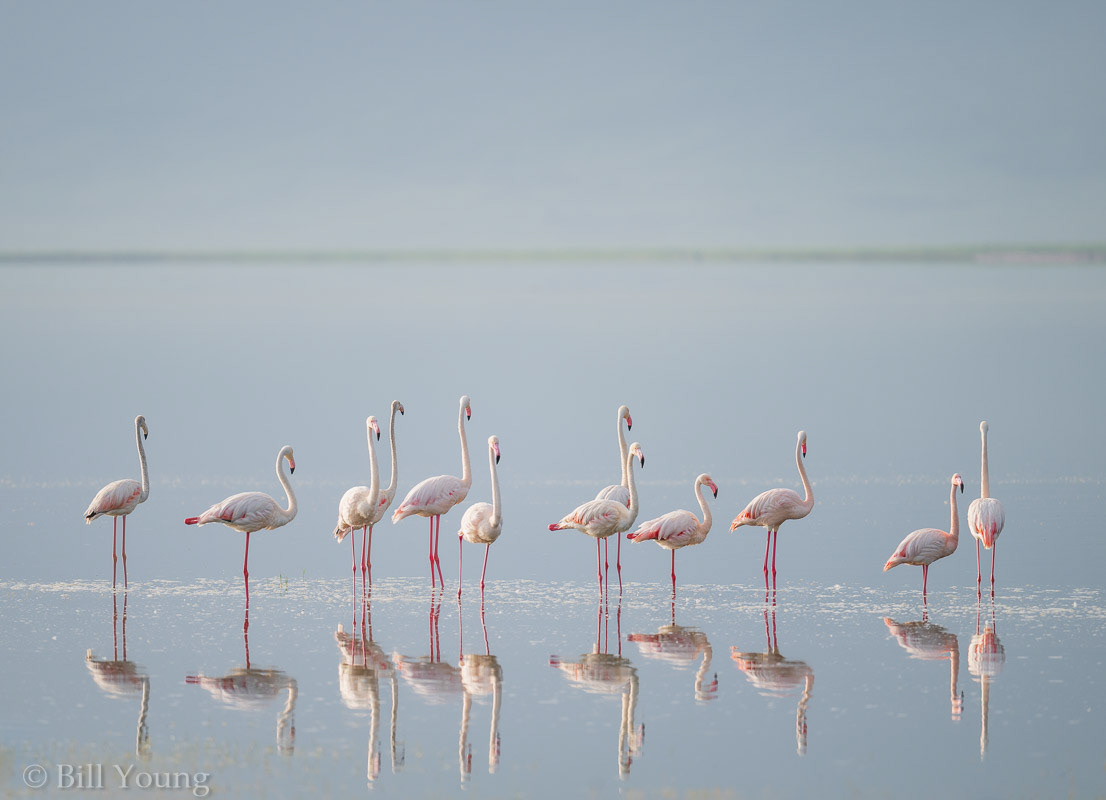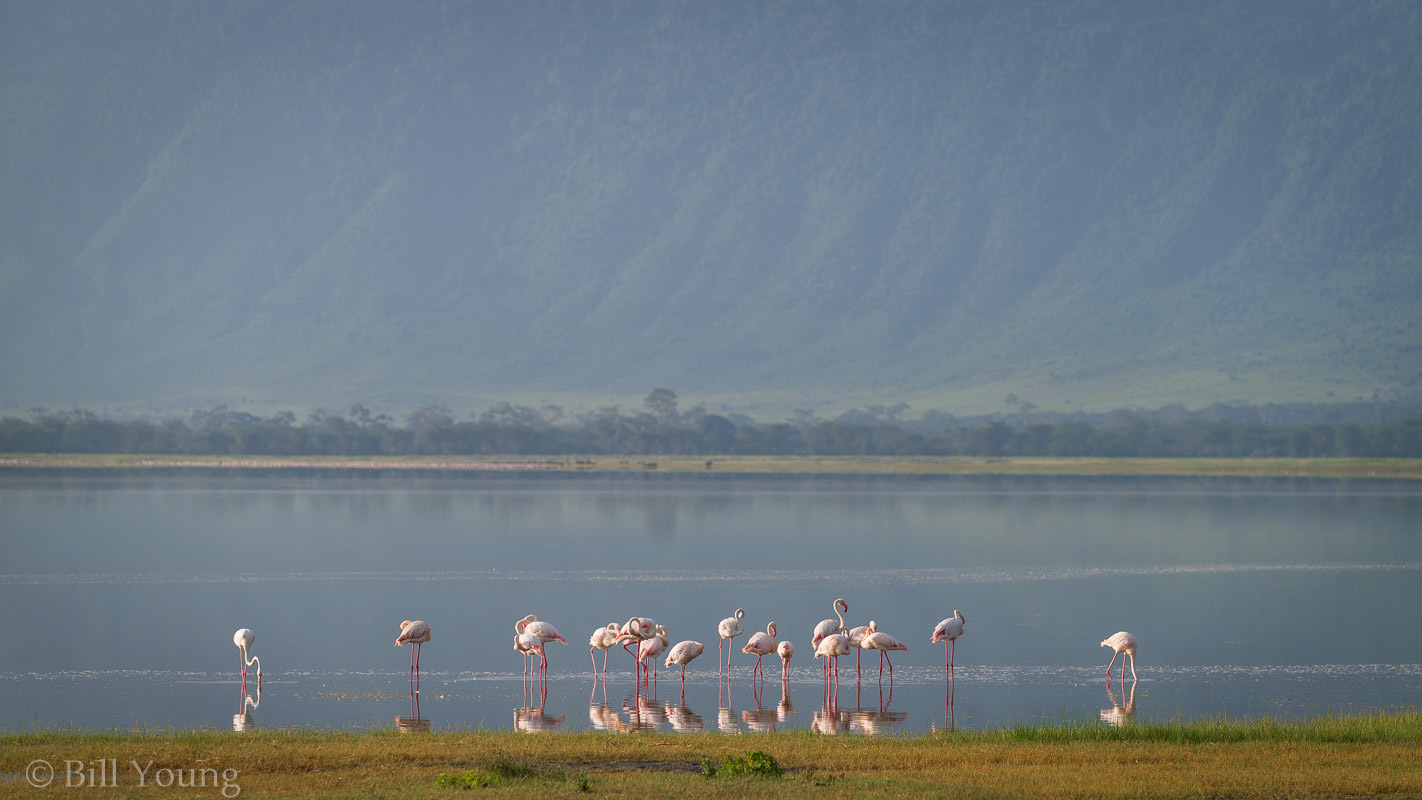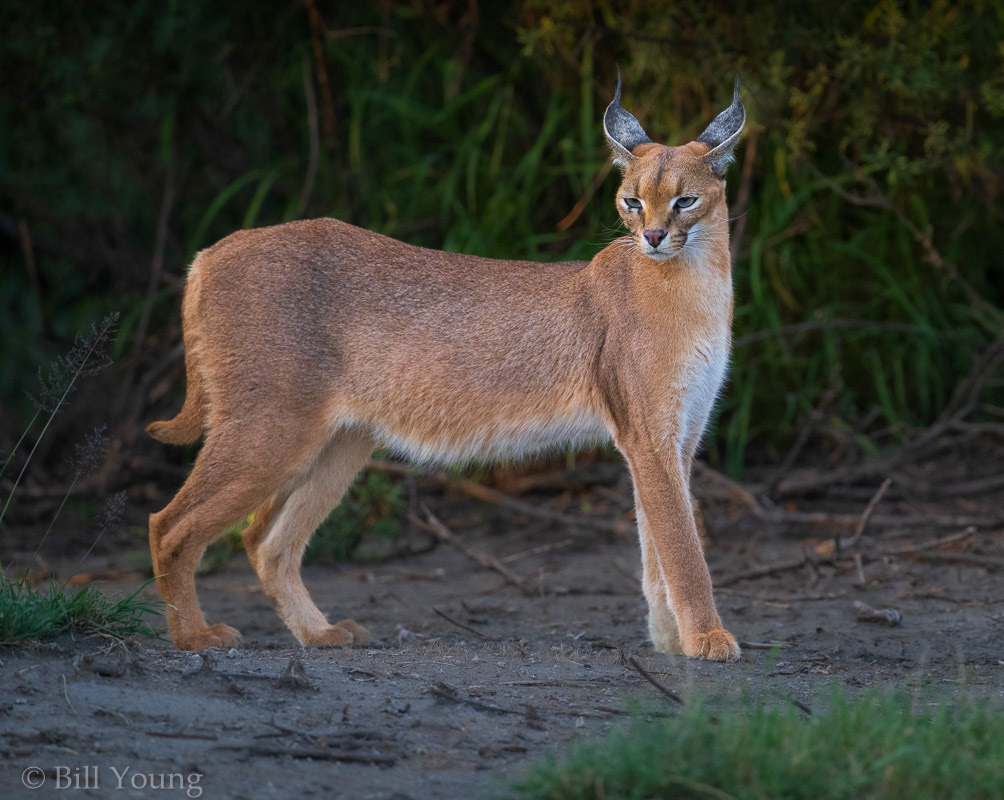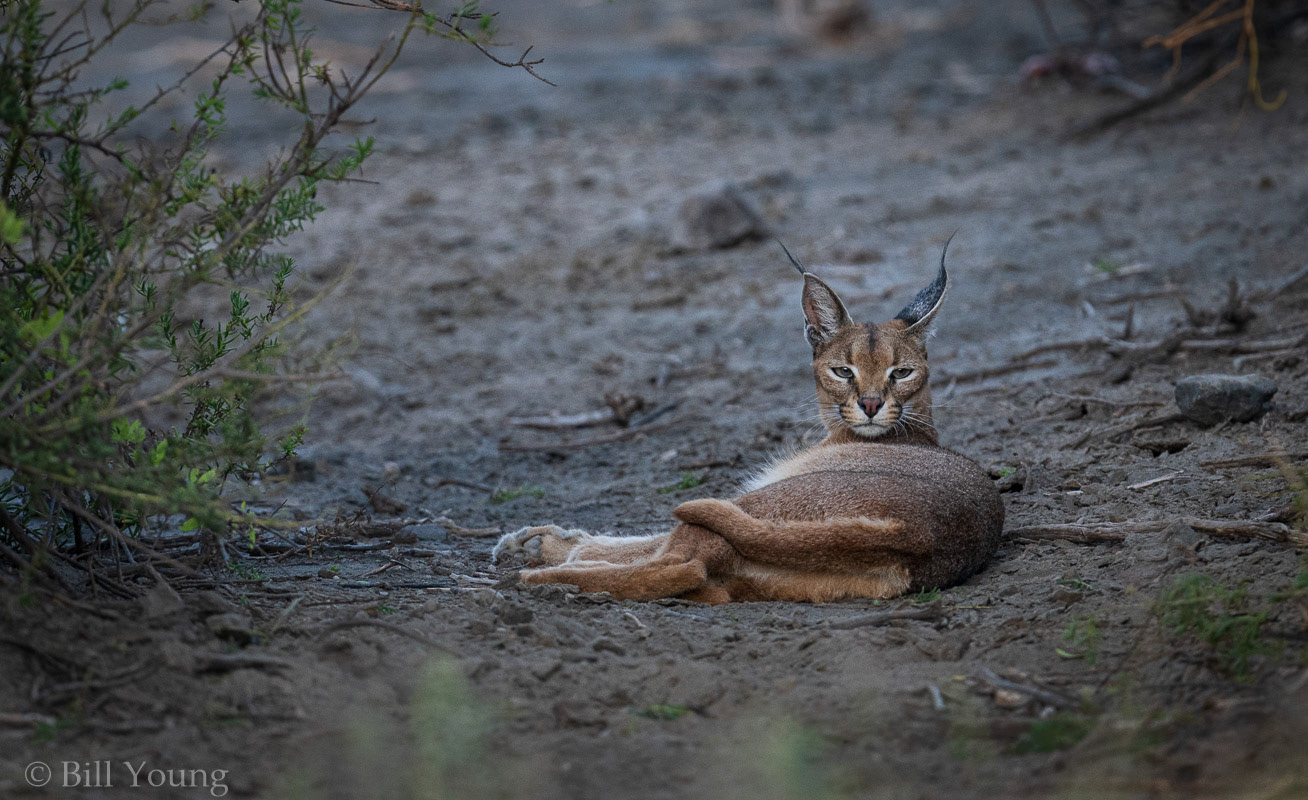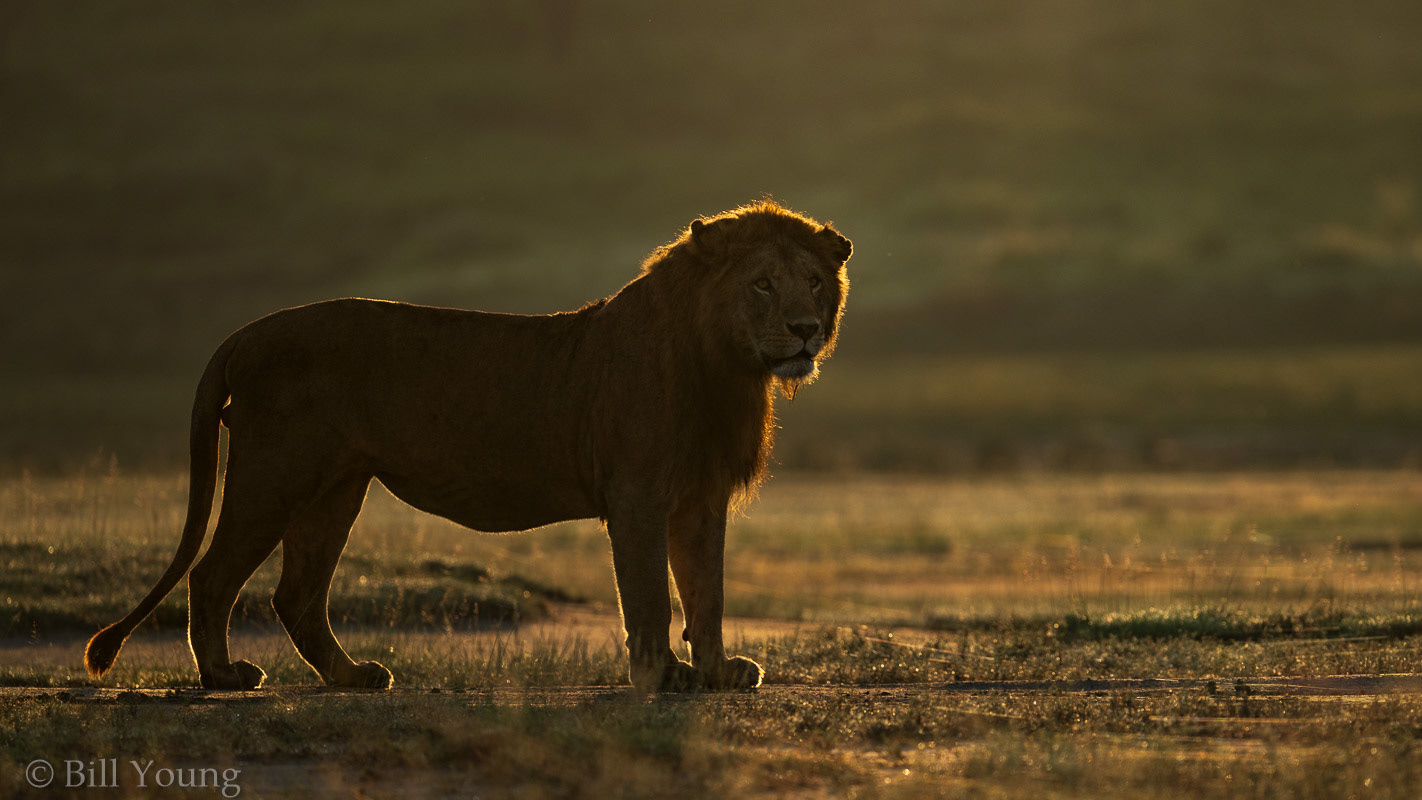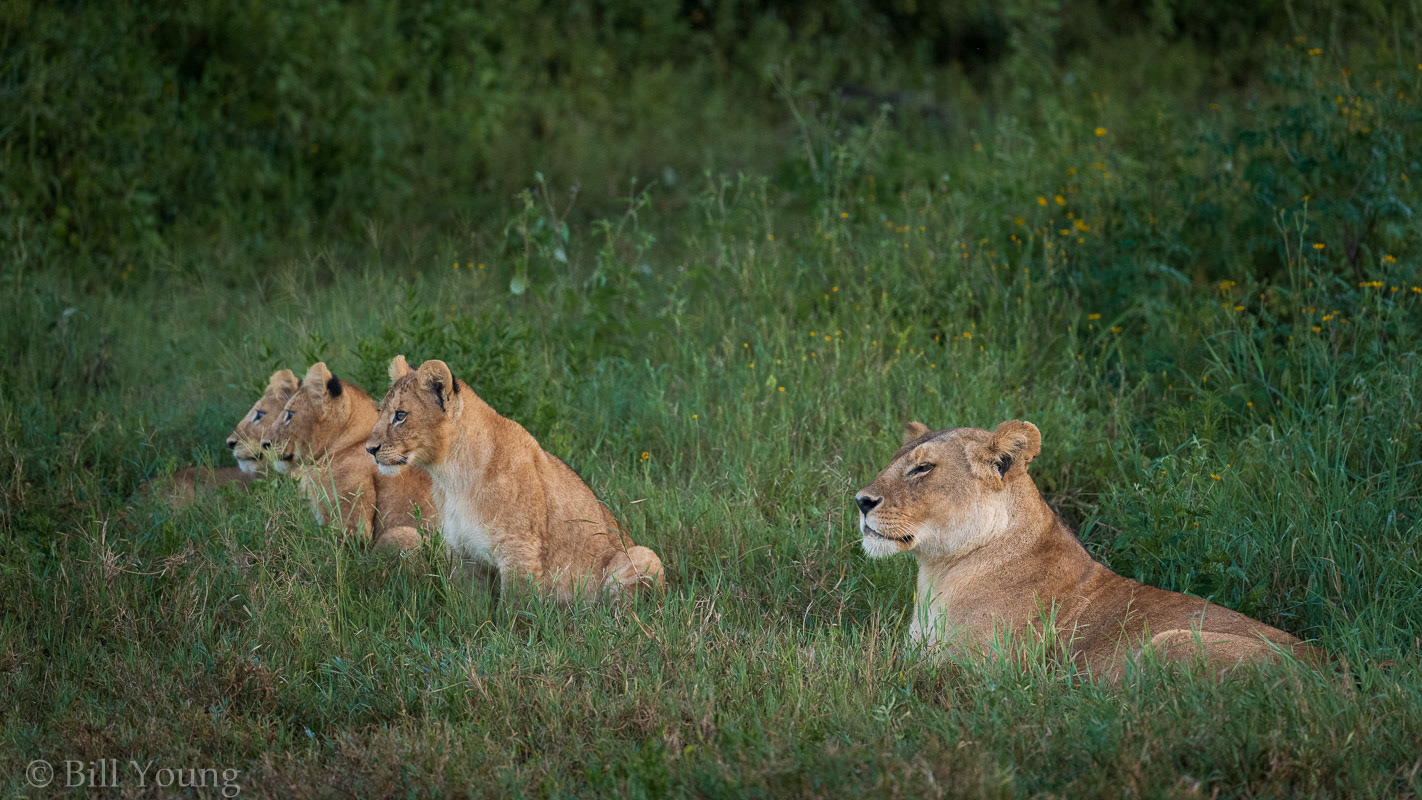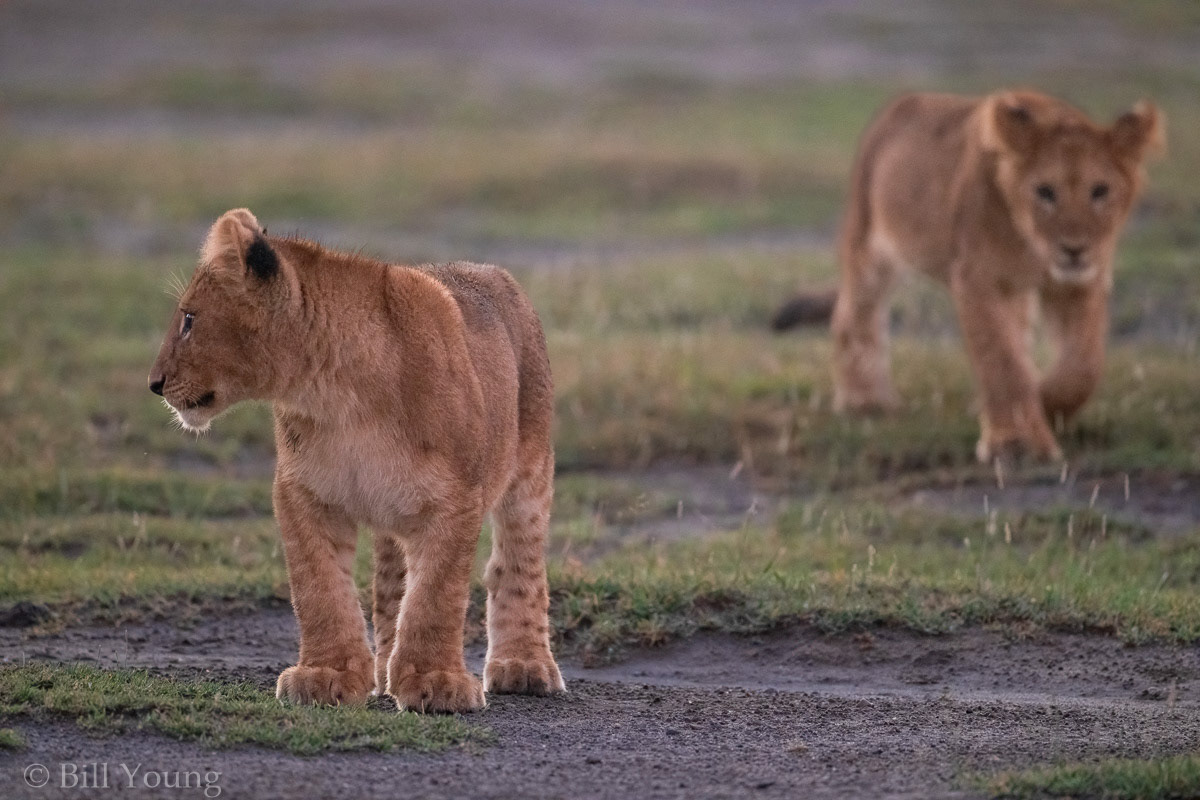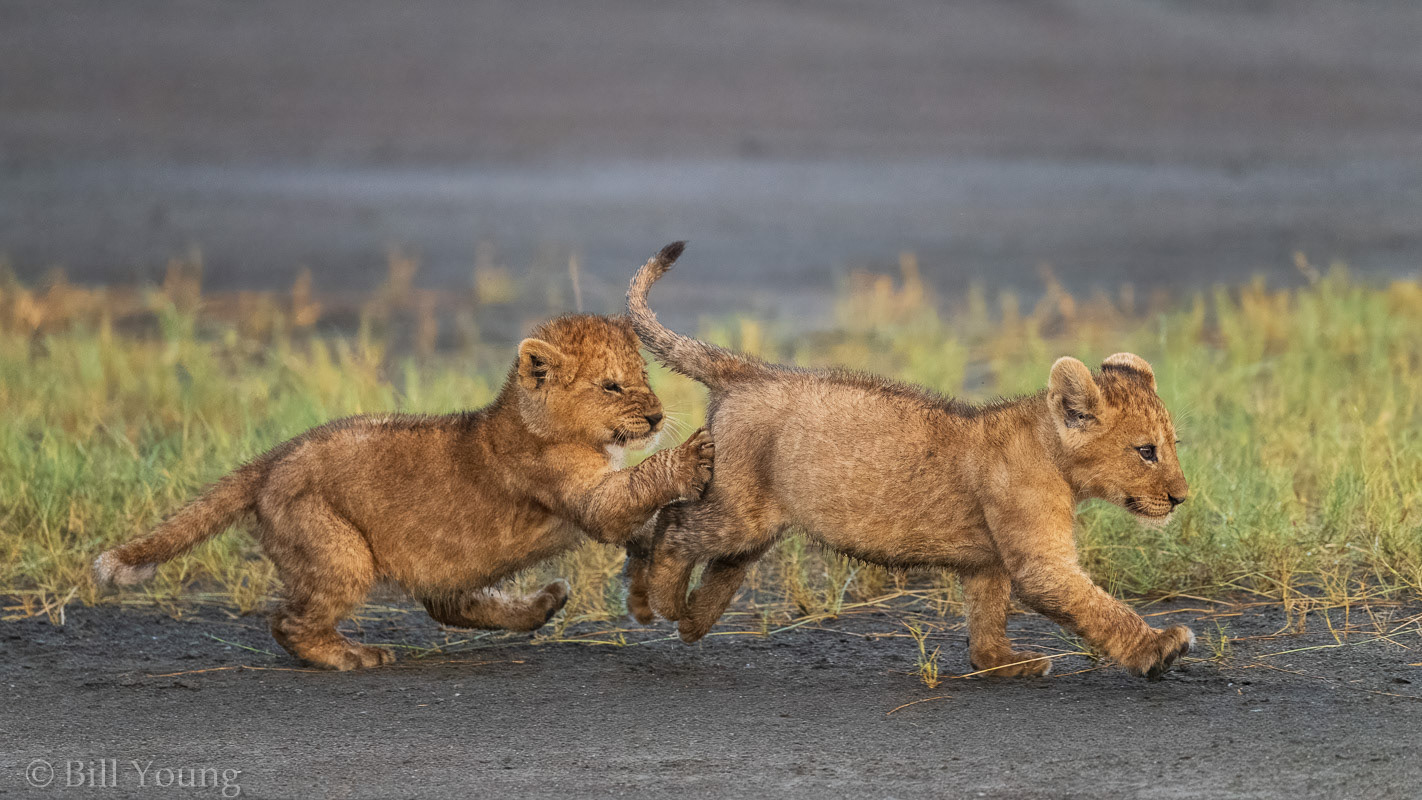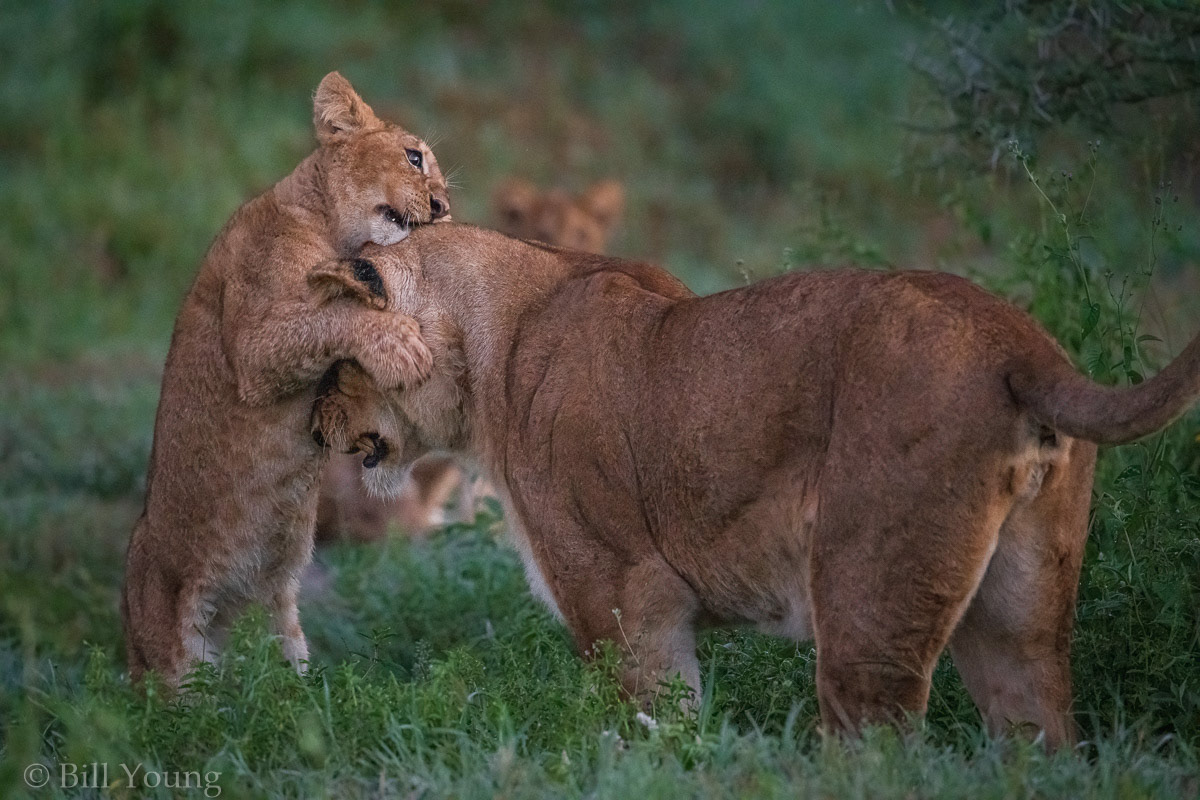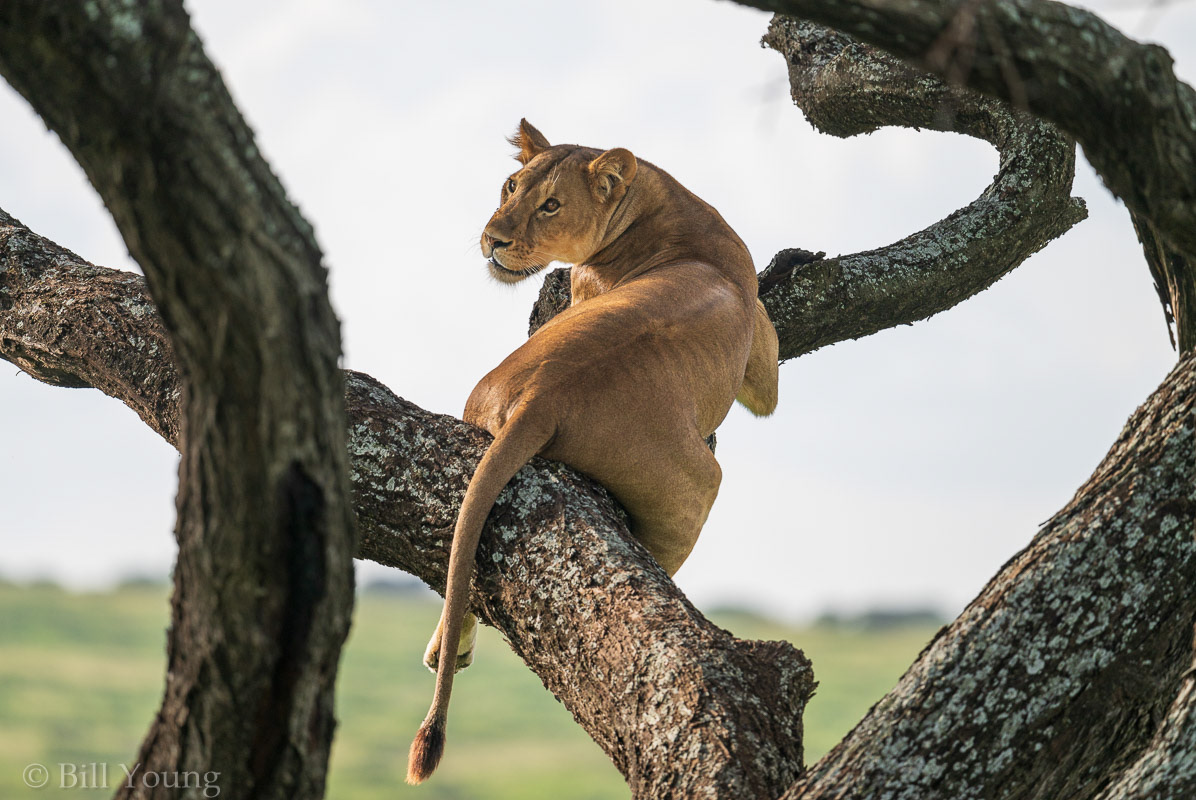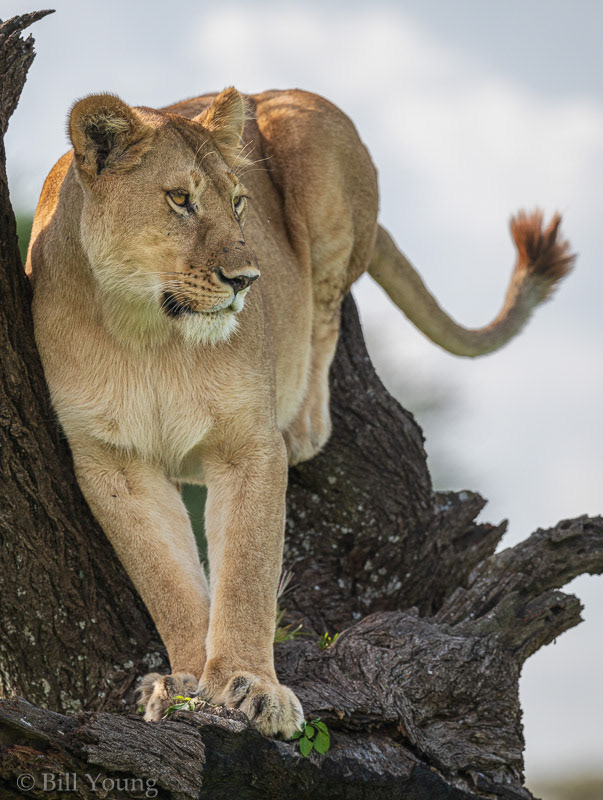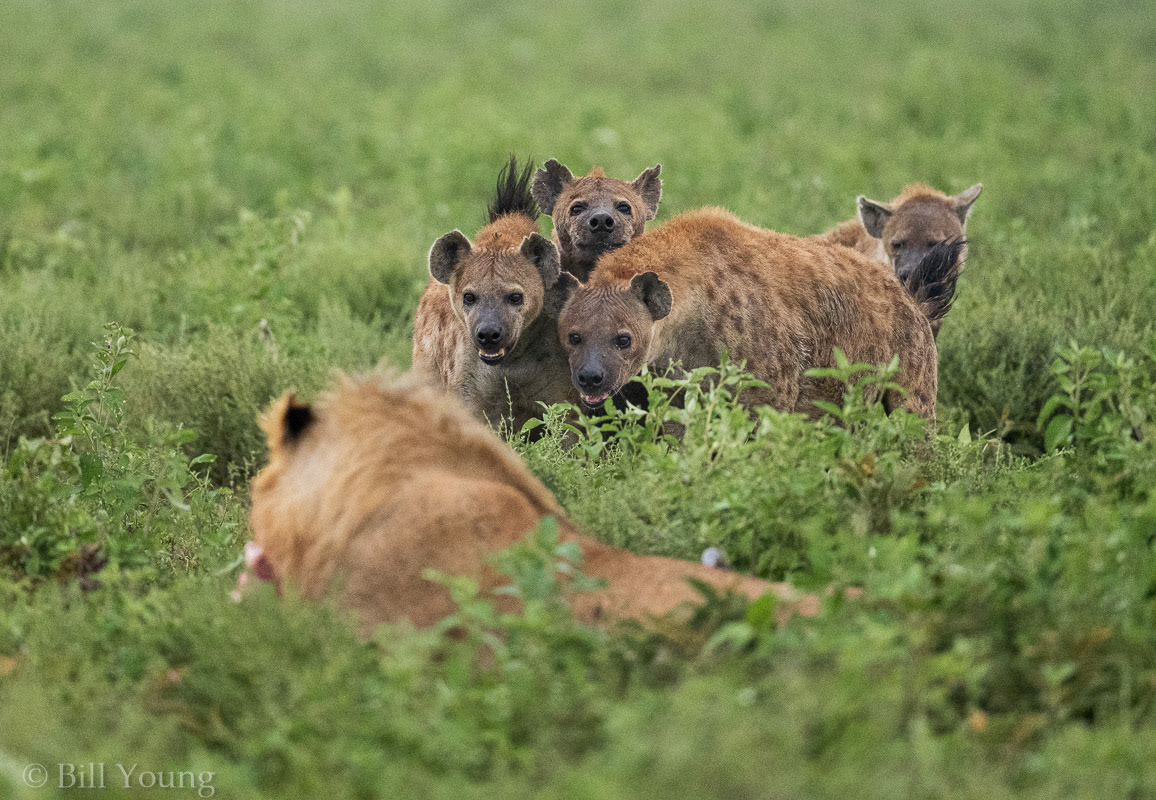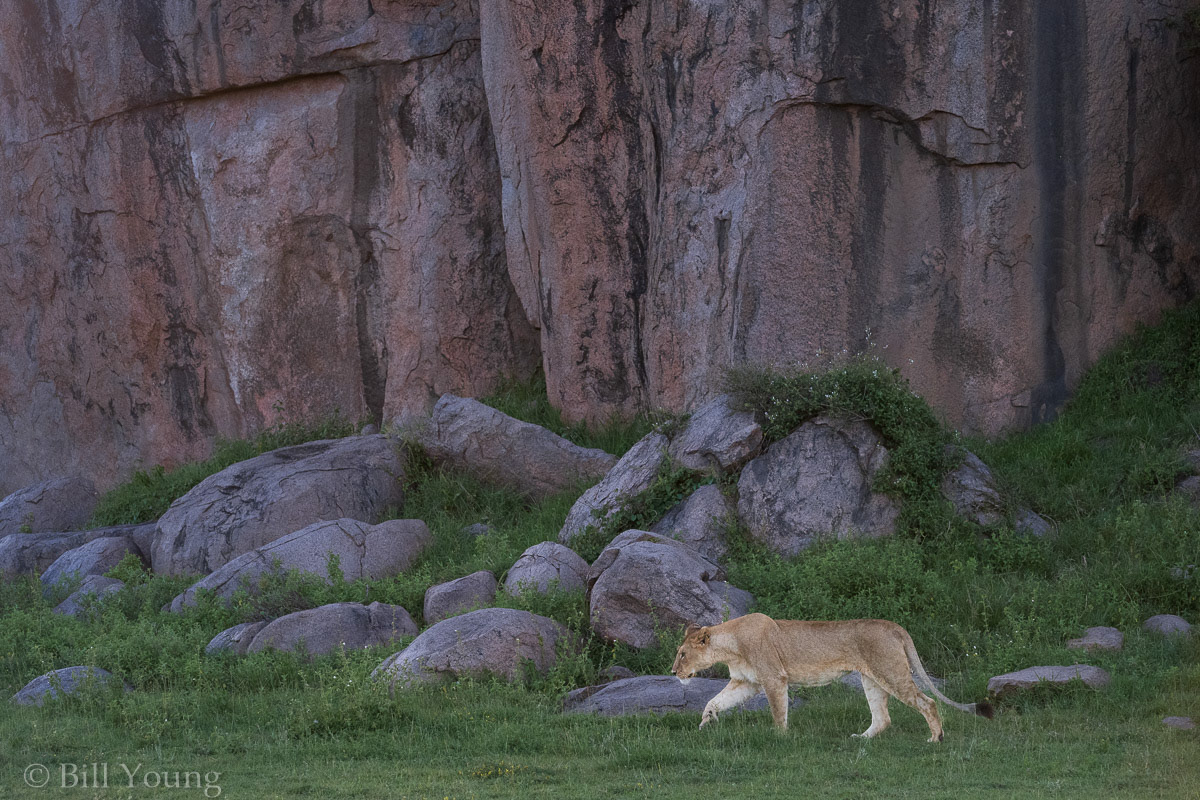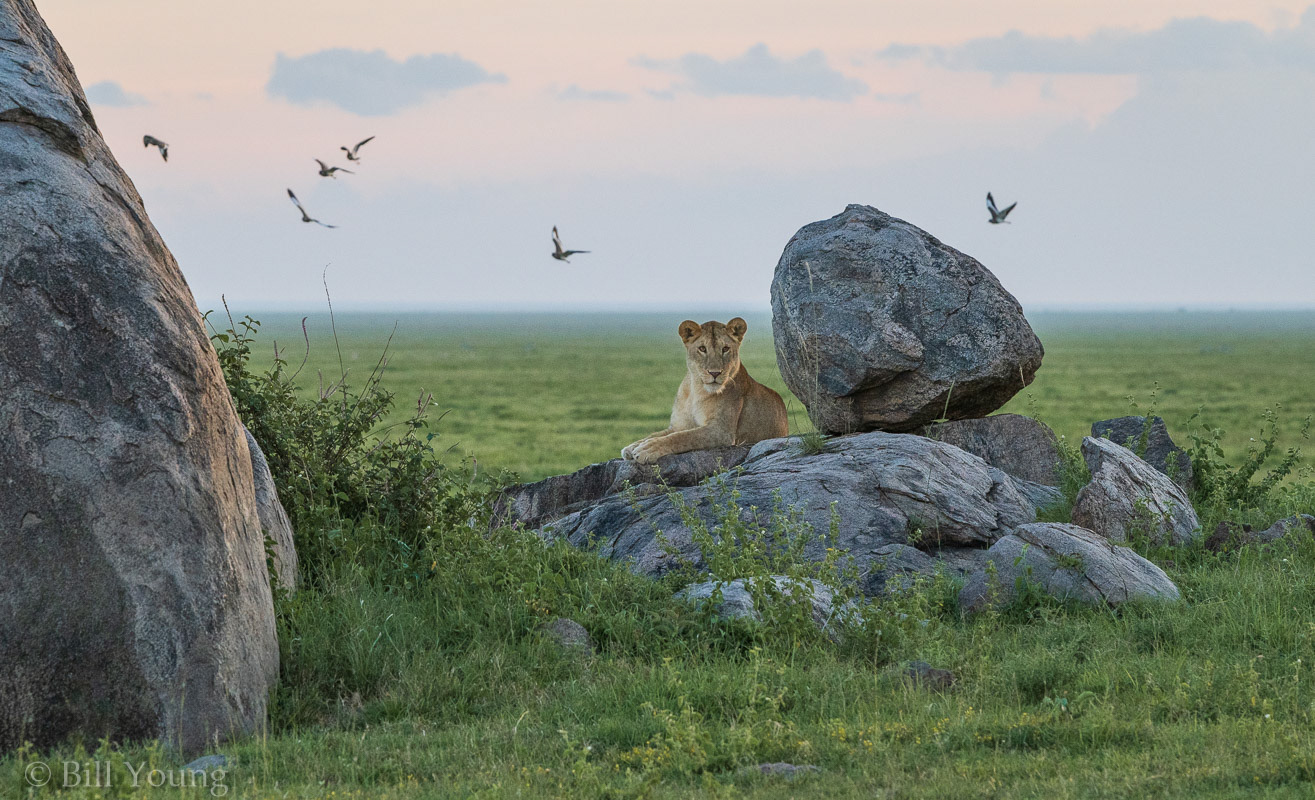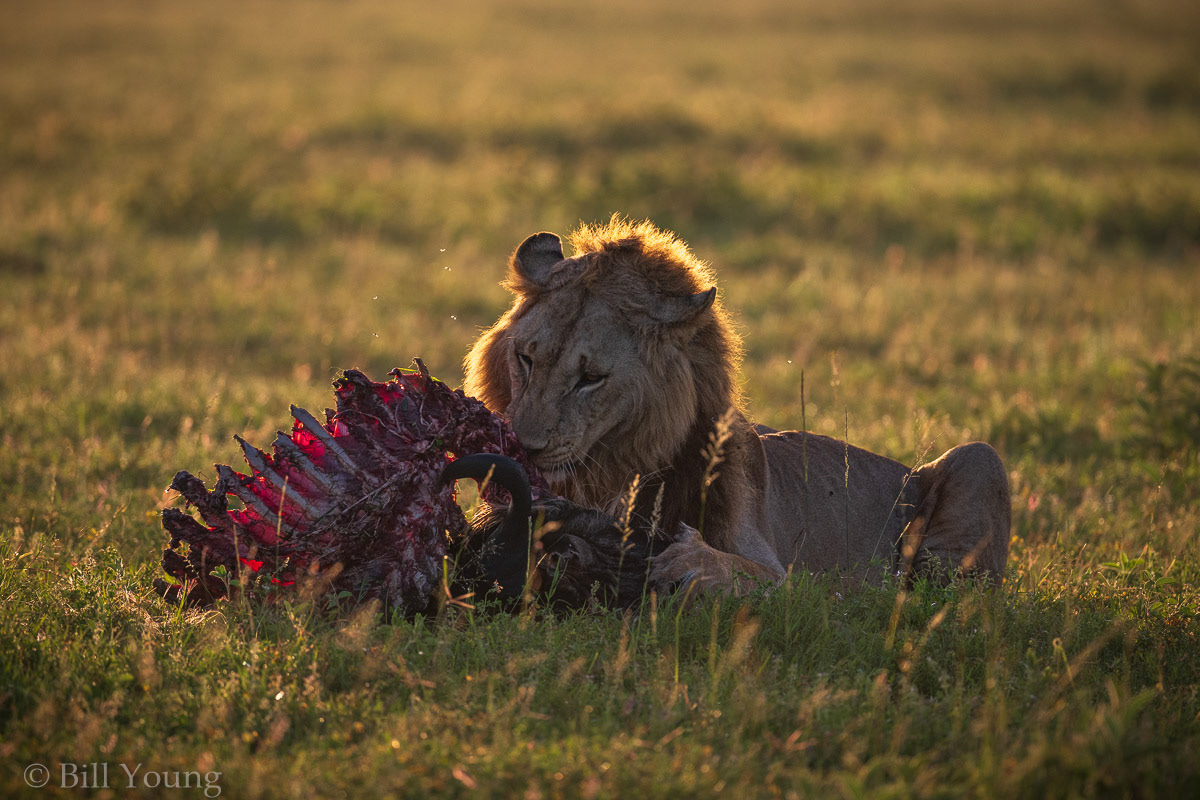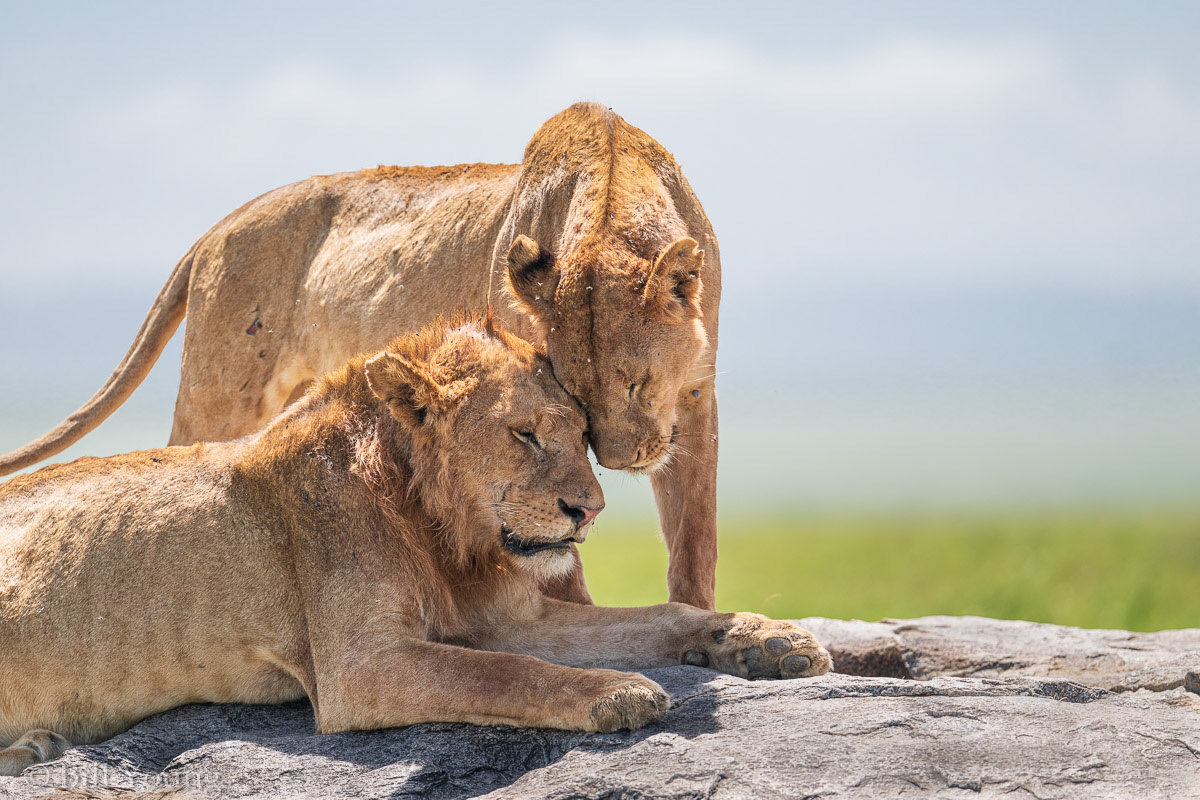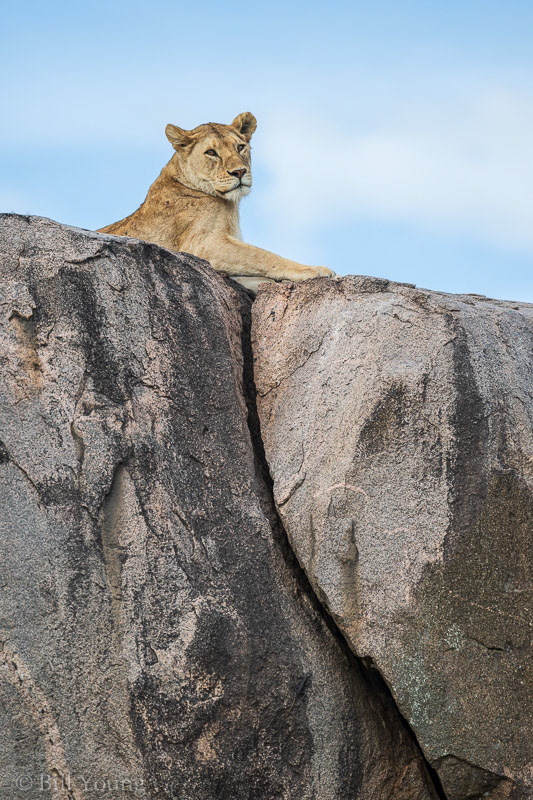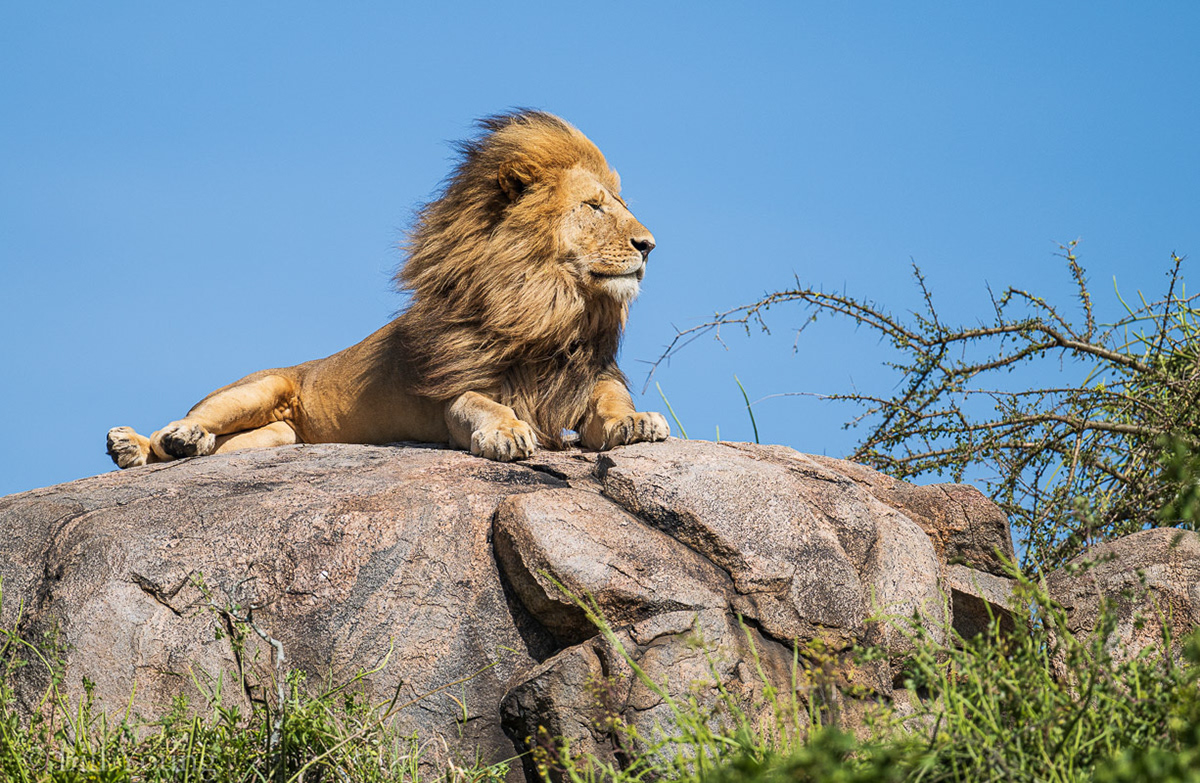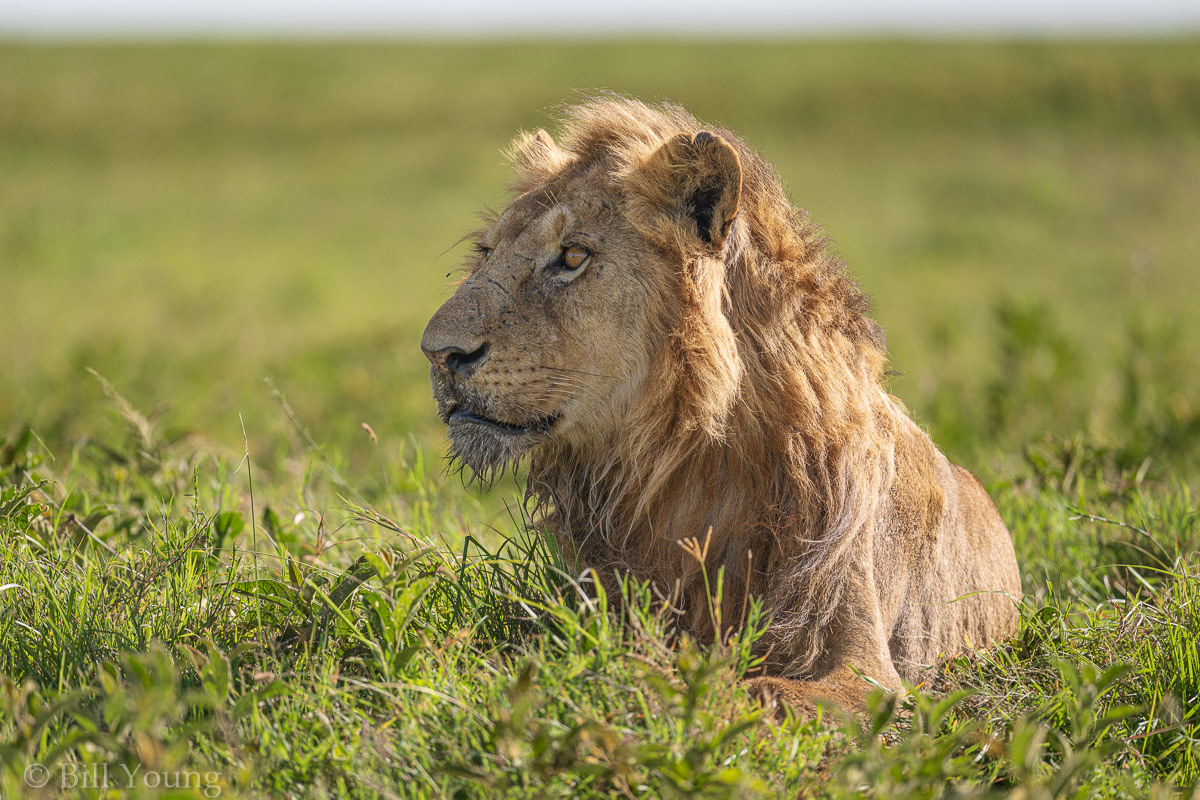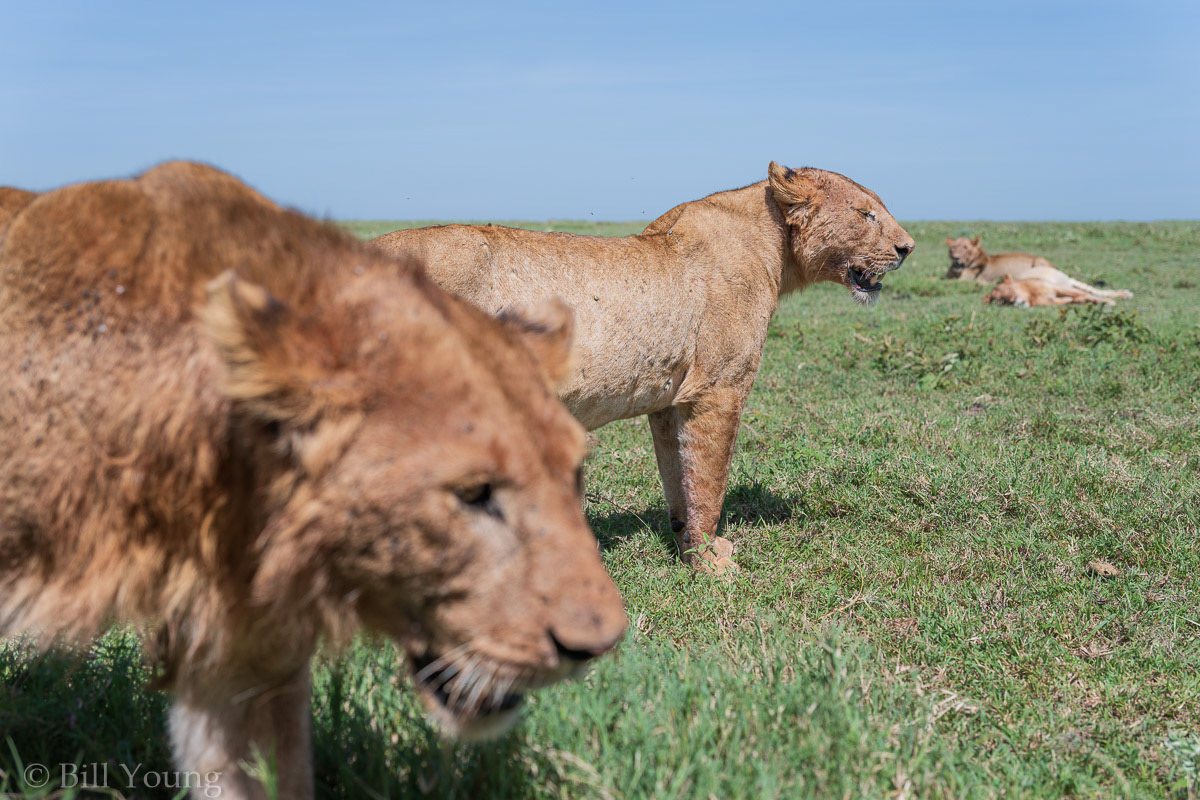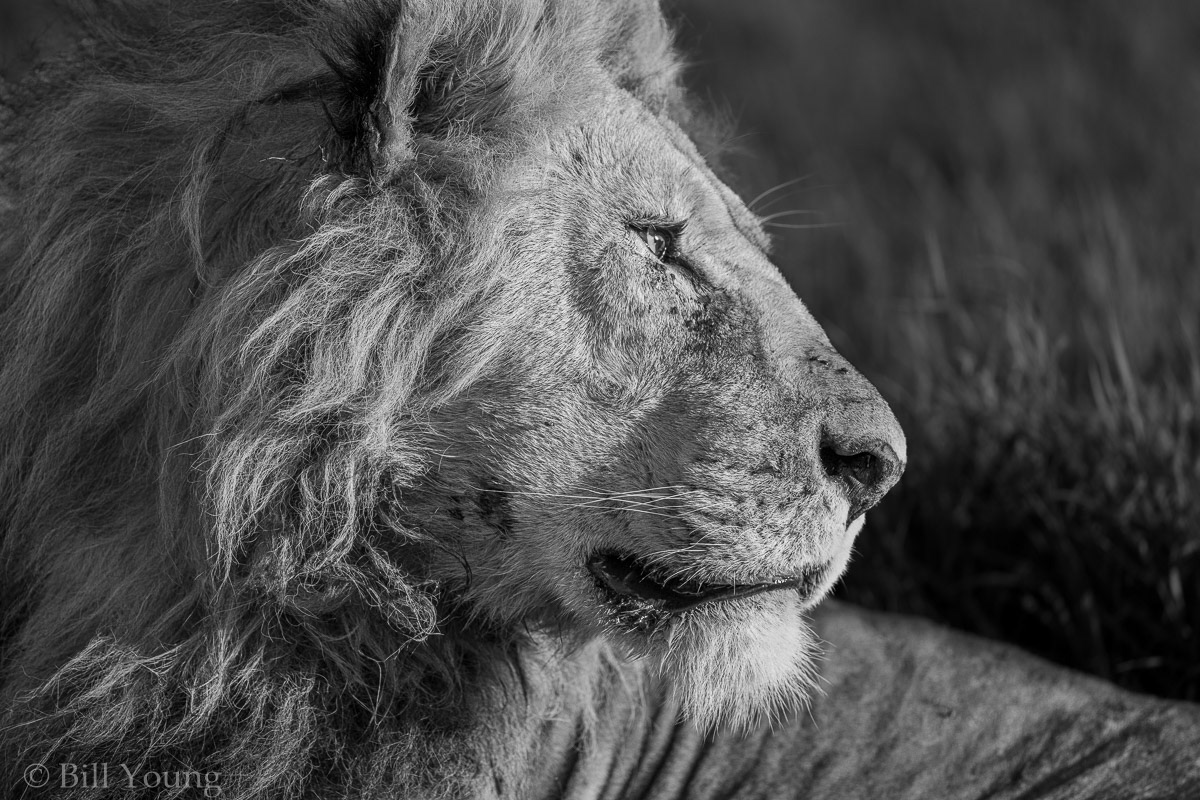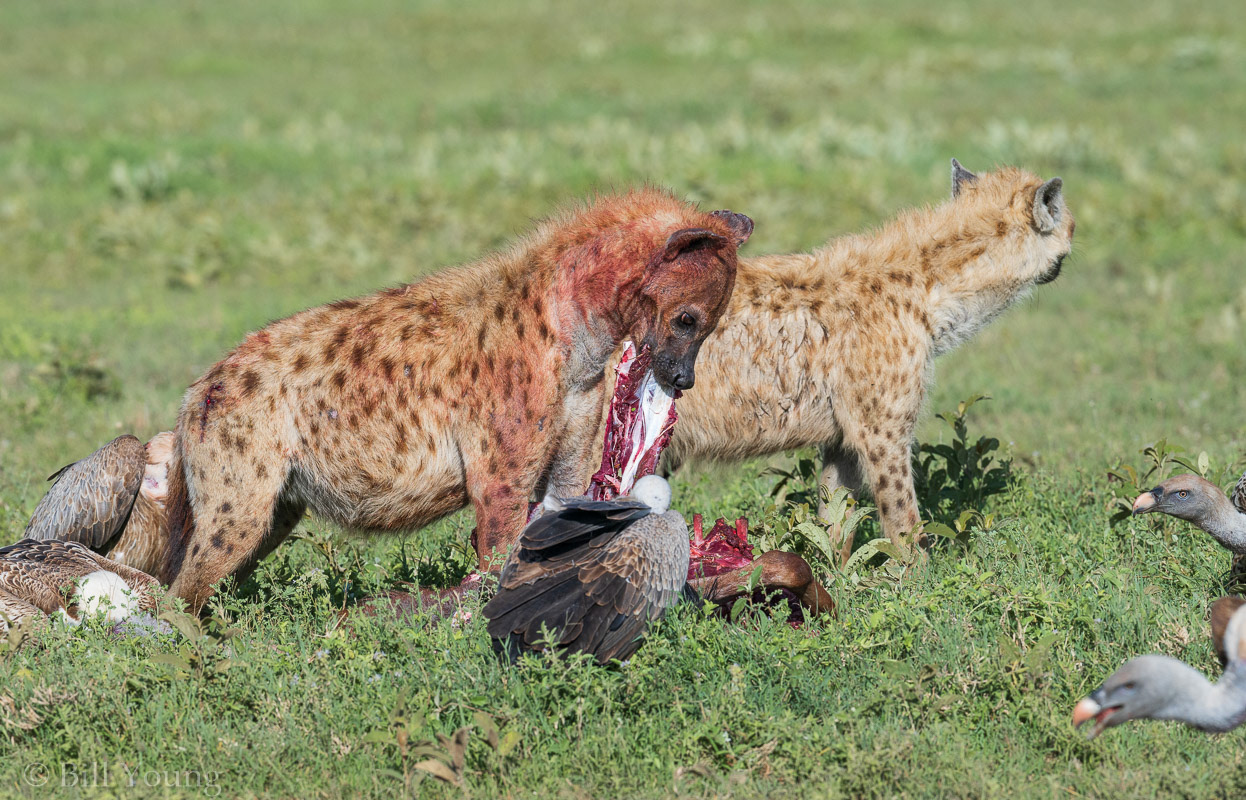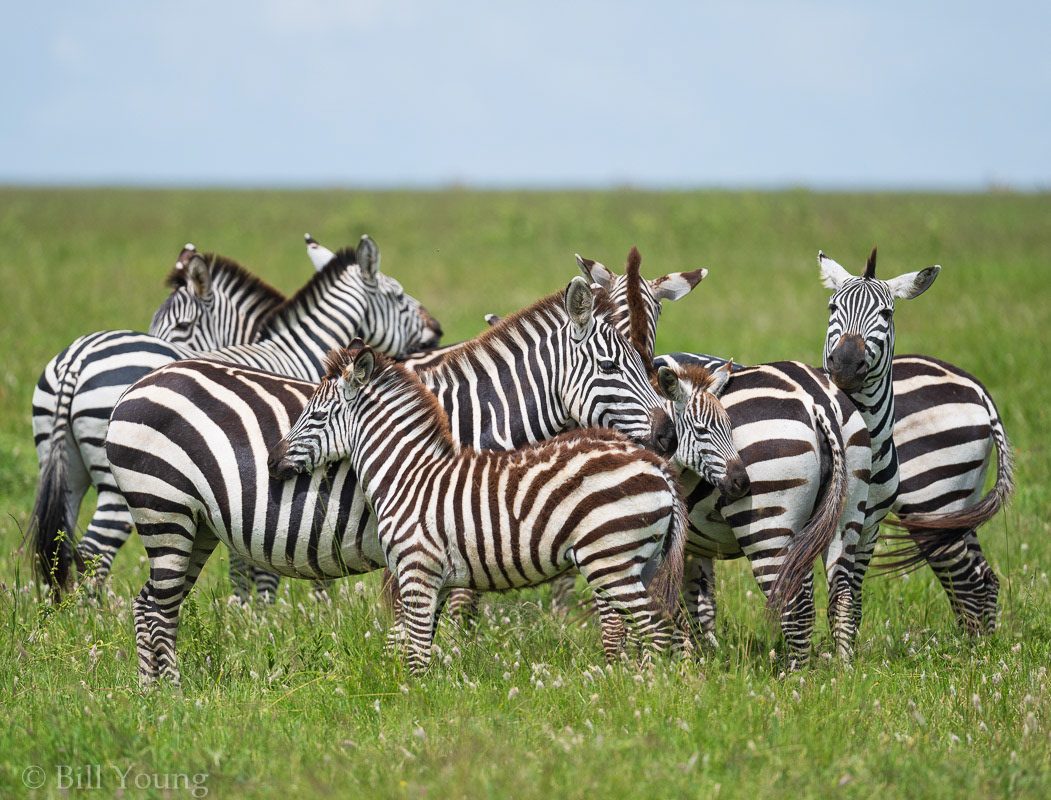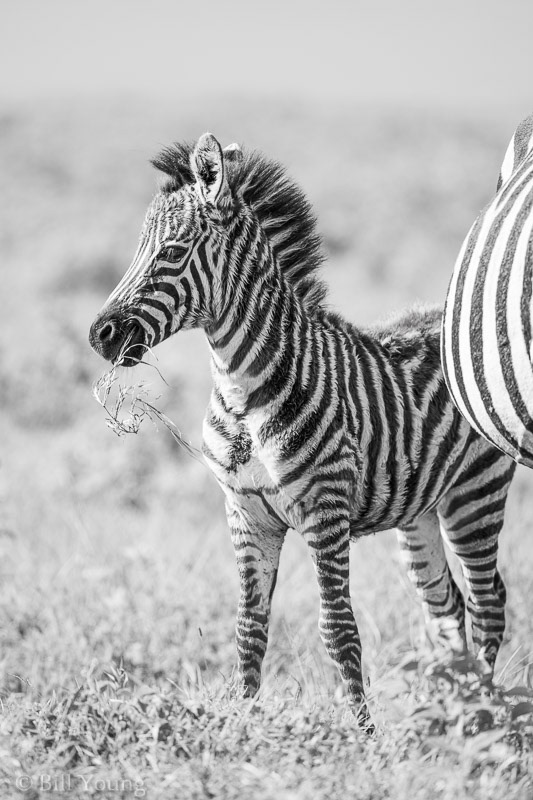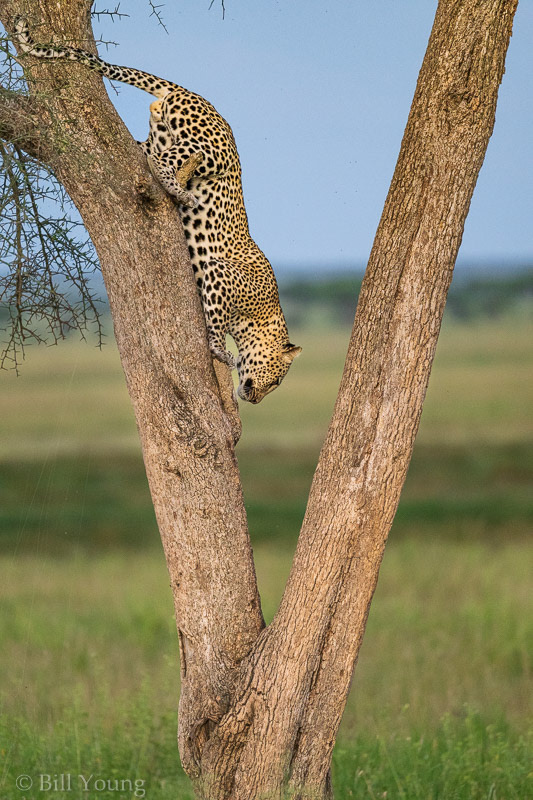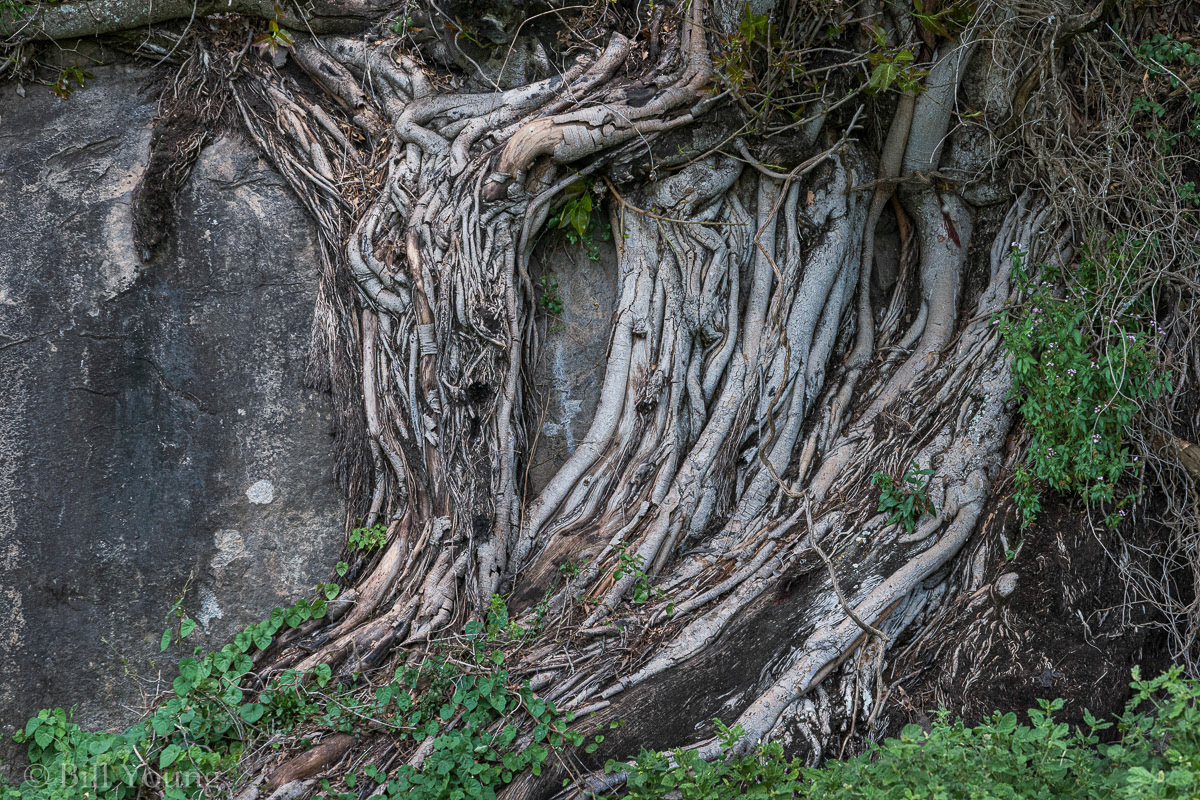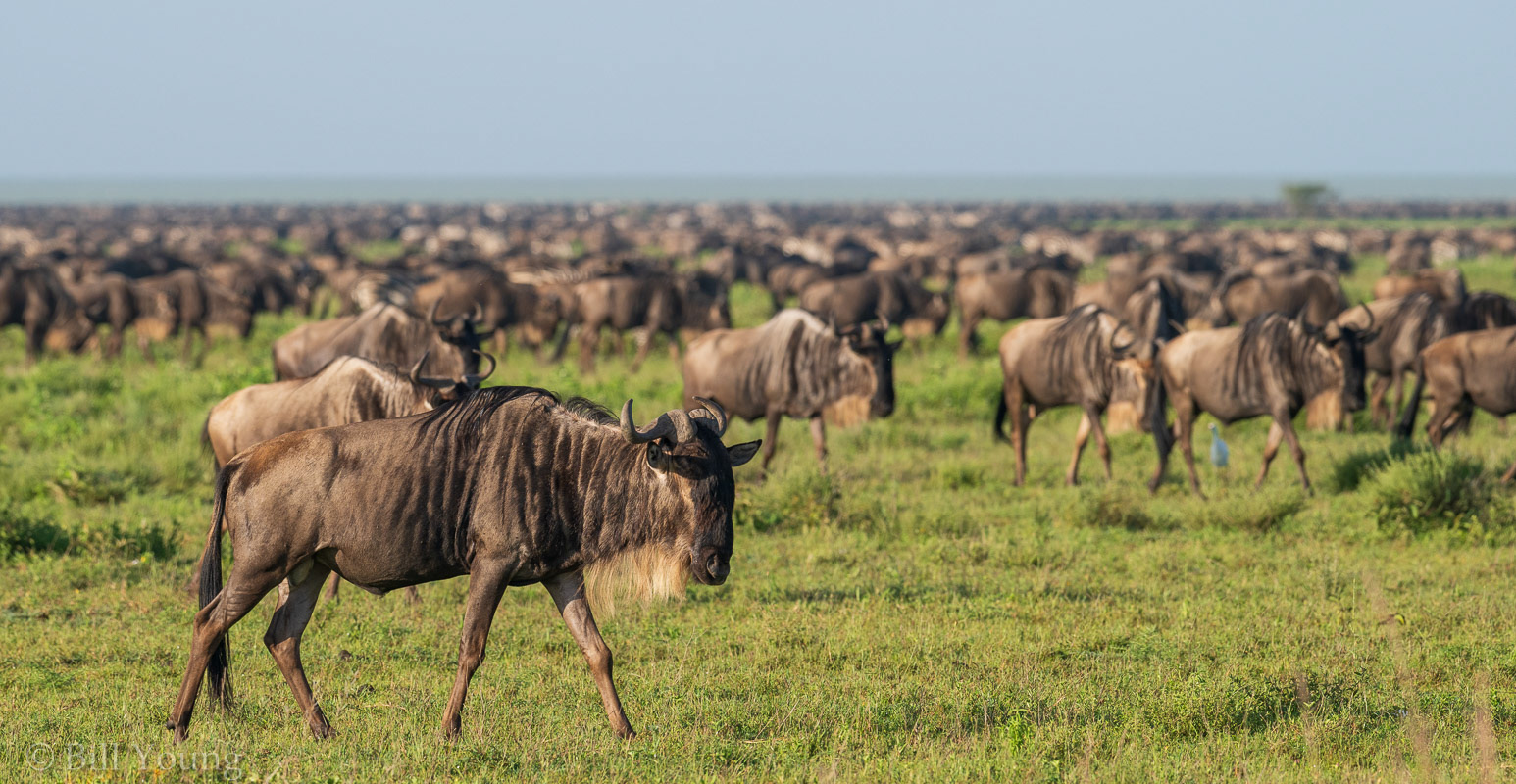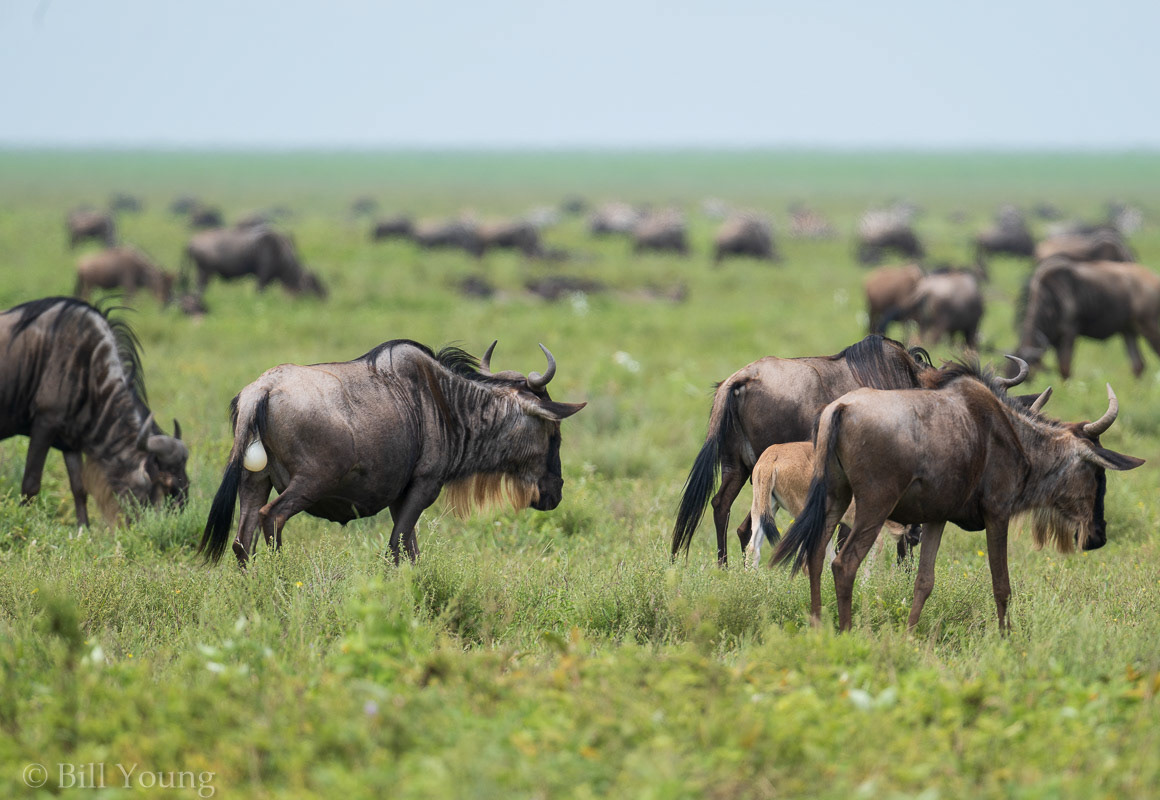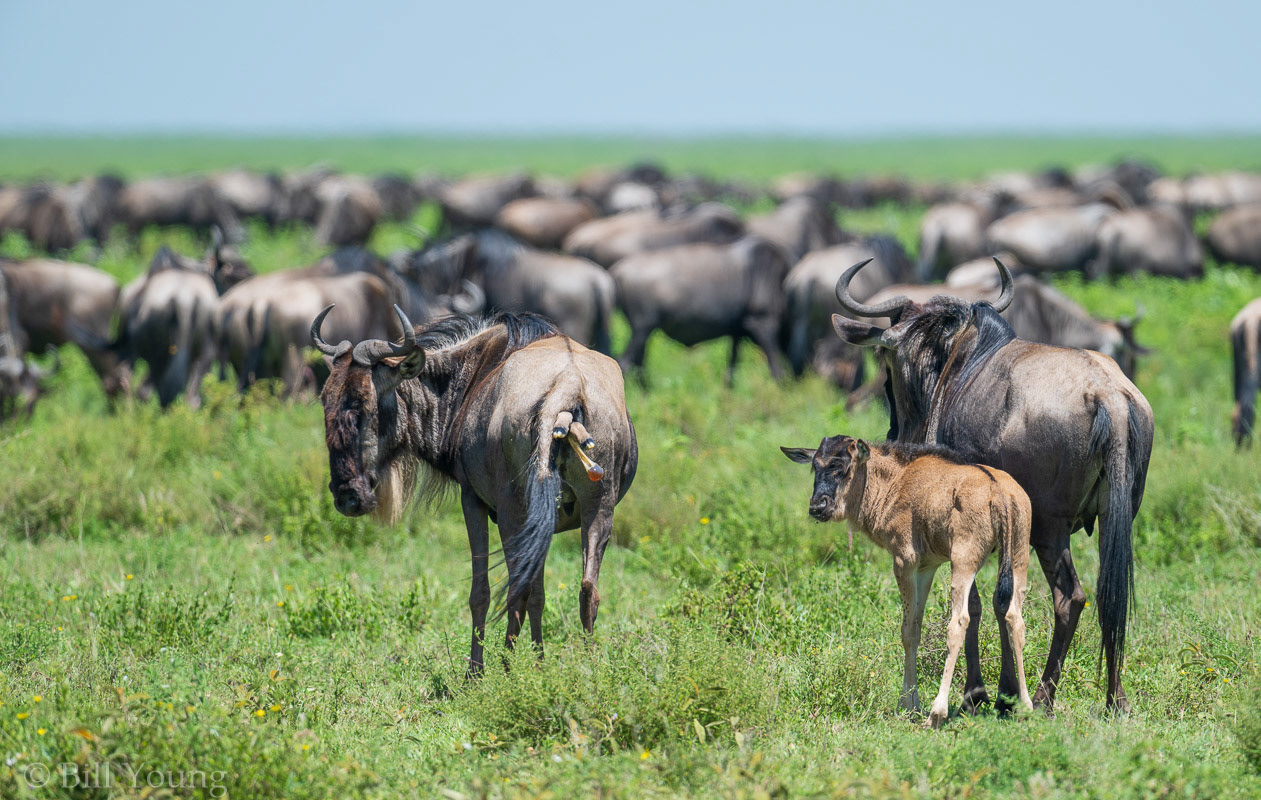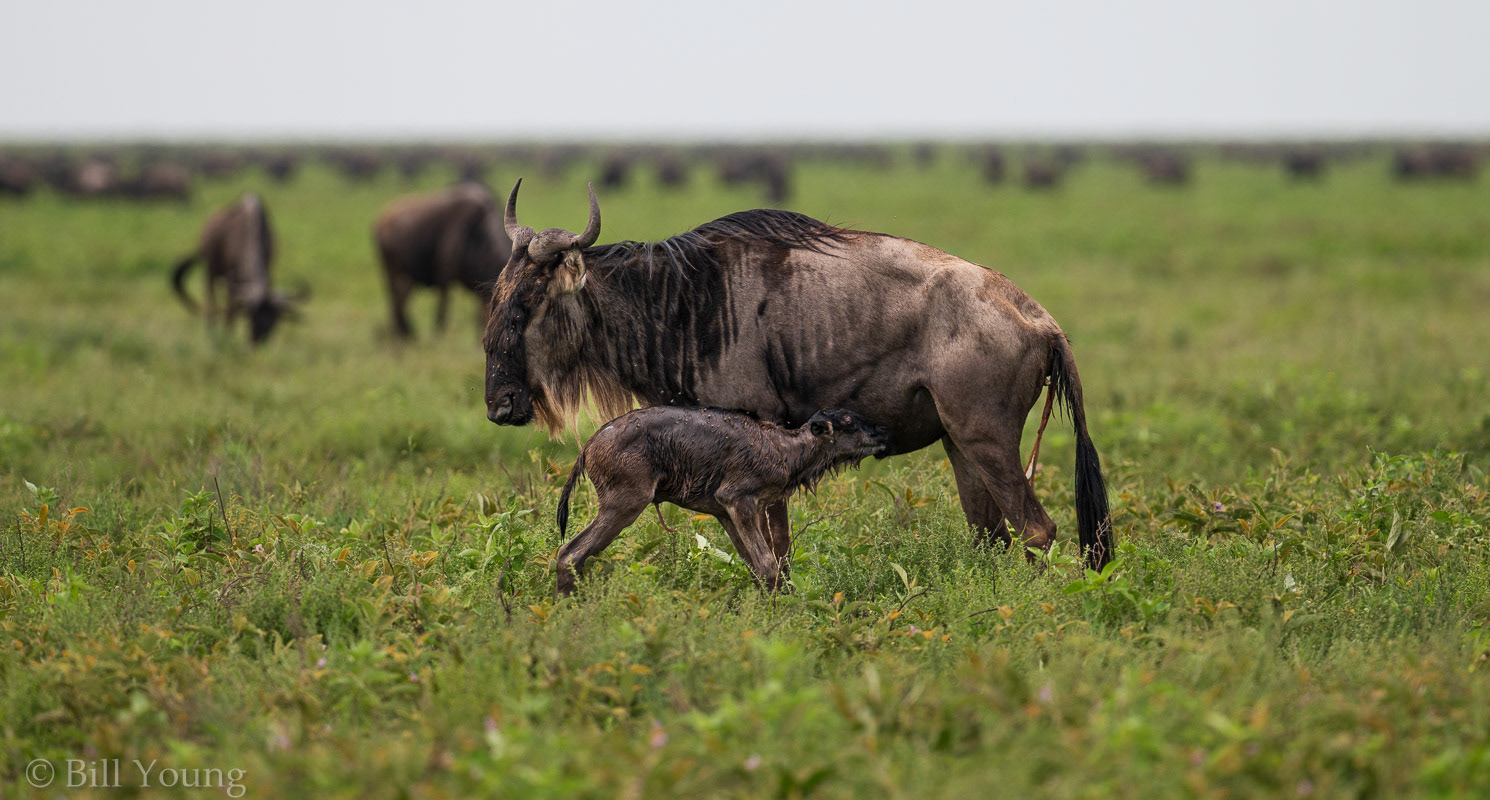While there are common aspects to every wildlife trip to Africa, you never know what you're going to see. It's best to go without expectations. This trip was mostly a repeat itinerary of a trip in 2017; the Ngorongoro Crater, Ndutu and the southern Serengeti. February is calving season for the wildebeest, and unlike the parched conditions in 2017 there had been rain, the plains were green and wildebeest and zebra were in abundance (as were the accompanying flies). We saw the various stages of the birth process, from the appearance of the amniotic sac, to feet sticking out, to the birth and first nursing. Interesting to see but not great photography.
One clear highlight for me on this trip was to see the elusive caracal, that small cat with the tufted ears like a lynx. One surprising aspect was that we saw more lions in trees than leopards. The sightings of the latter were relatively poor, but still rare enough that they were surrounded by cars.
In the Serengeti you want to see the cats on the kopjes (stone outcrops), ideally at sunset with a dramatic sky. Sadly we did see lions on kopjes but sunset shots were limited as were the dramatic skies. One evening we spent hours with three female lions only to have one of them dash our hopes when she turned away from a ledge where we had positioned for a good composition. Such is wildlife shooting.
